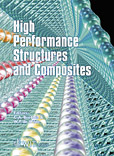MIG Welding Of Aluminium Matrix Composites. Weldability And Post Welding Heat Treatments.
Price
Free (open access)
Transaction
Volume
59
Pages
8
Published
2002
Size
461 kb
Paper DOI
10.2495/HPS020561
Copyright
WIT Press
Author(s)
J. M. Gomez de Salazar & M. I. Barrena
Abstract
Metal matrix composites reinforced with A1203particles combine the properties of the matrix (ductility and toughness) with the ceramic properties of the reinforcements (high strength) and they have been used profusely in different industries. However, their wide application as structural materials requires proper development of their joint process. The present work describes the results obtained from microstructural evaluation, both with optical and scanning electronic microscopy (OM and SEM, respectively), and from mechanical evaluation (Hardness profiles and stress strain changes) of the weld produced in the materials using GMAW (MIG) welding process. The filler metal used has a composition of AI-5Mg (AA5356). A characteristic of the welding carried out in composites, when compared to welds made under the same condition using materials with out reinforcement, is that the size of the welding pool is greater in the composite materials. This is due to the lower thermal conductivity of the composites, which means that heat is dissipated more slowly from fusion zone thus allowing a greater quantity of the base material to melt. Furthermore, the composites act as insulator and therefore reduce the cooling rate of the bath. The thermal effect of welding on different types of joint results in a loss in the mechanical properties of the heat affected zones (HAZ). These properties can be recover with post welding heat treatment.
Keywords





